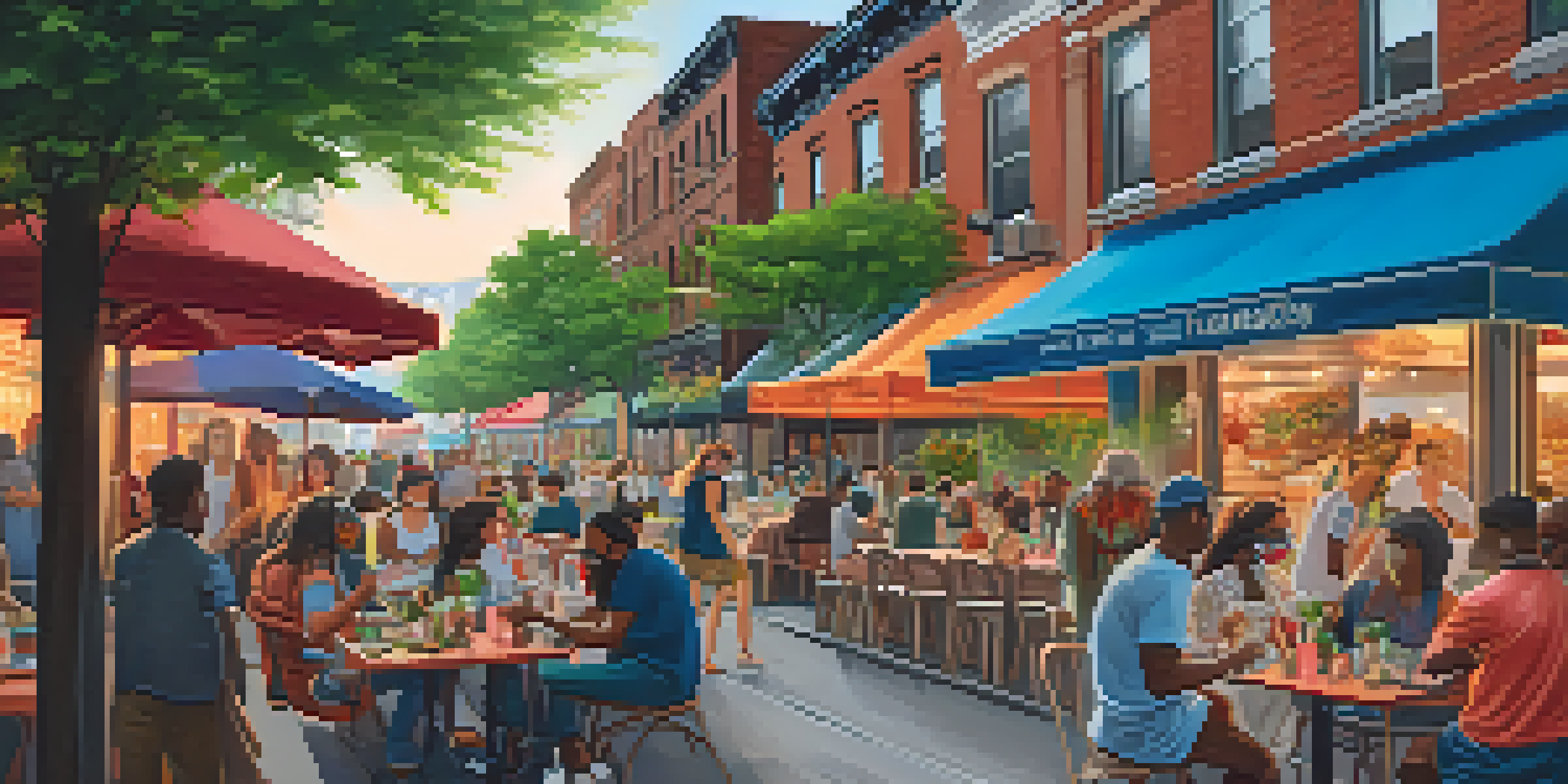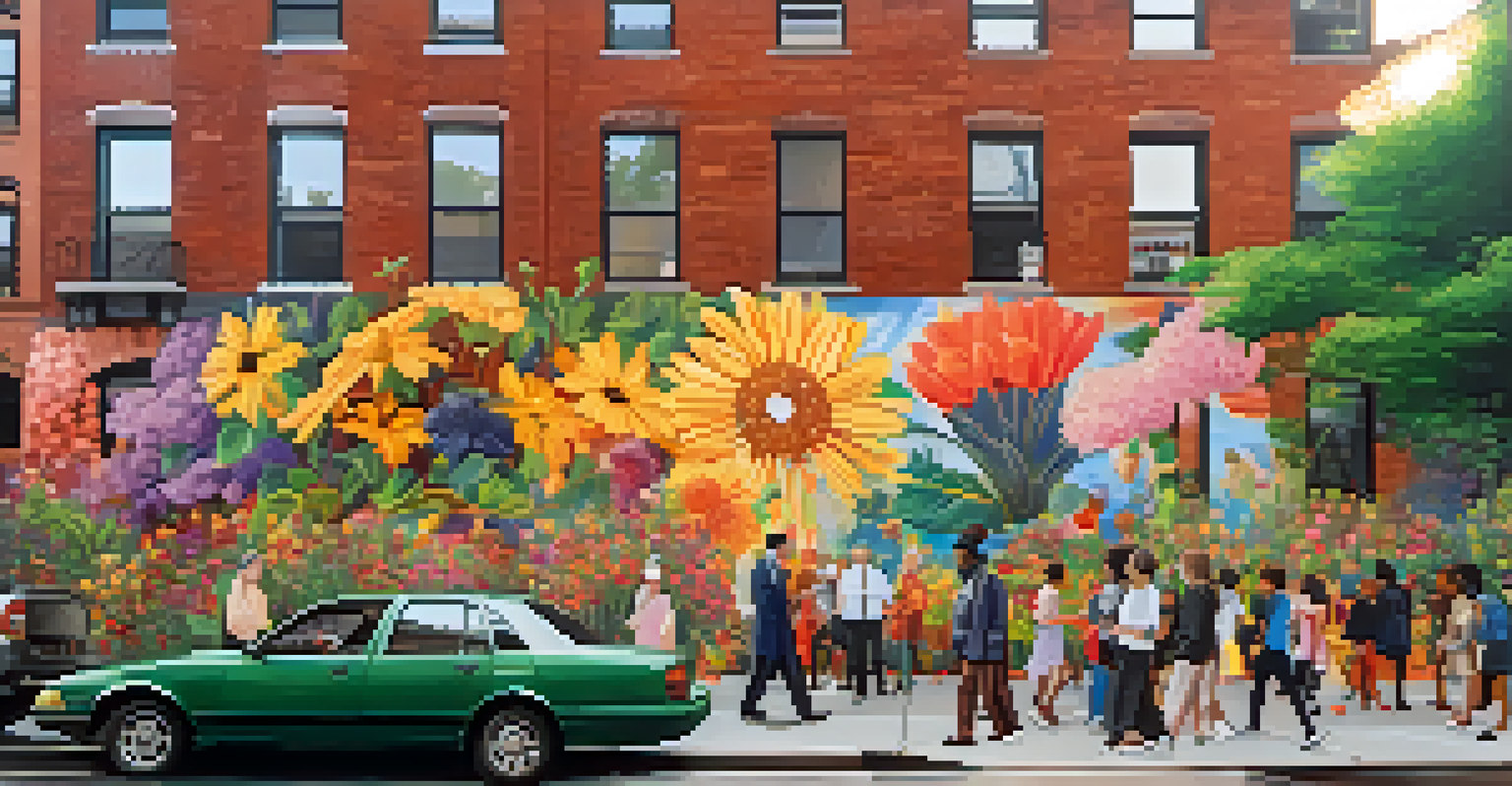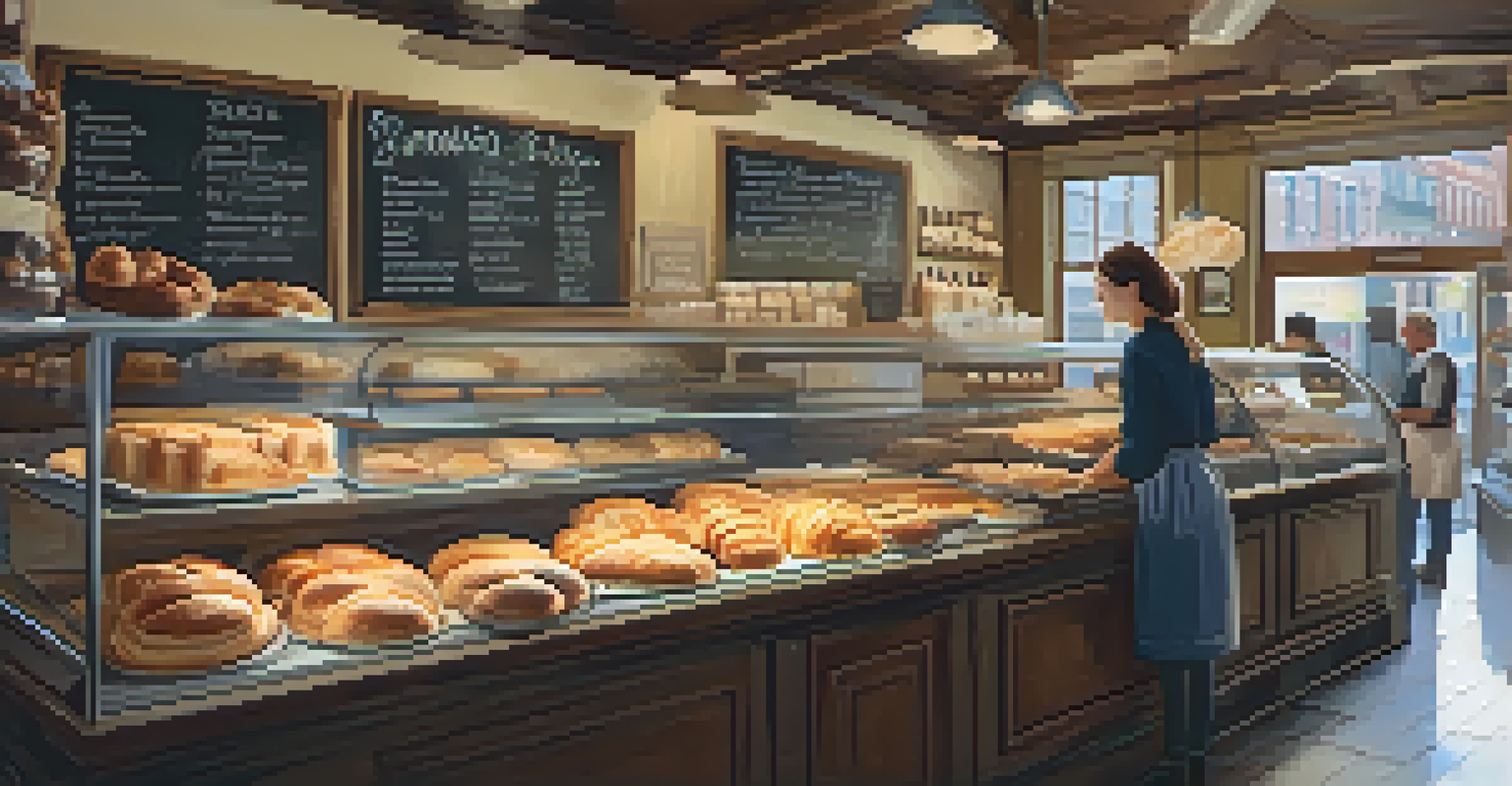Social Fabric of NYC: Changes Induced by the Pandemic

The Initial Shock: NYC's Response to the Pandemic
When COVID-19 swept through New York City, it felt like a scene from a dystopian movie. Streets that were once bustling with life suddenly fell silent, as lockdown measures forced New Yorkers indoors. This abrupt change not only affected the daily routines of millions but also highlighted the resilience of the city's spirit, as communities began to adapt to a new way of living.
The greatness of a community is most accurately measured by the compassionate actions of its members.
As people adjusted to remote work and virtual gatherings, a sense of isolation crept in for many. However, this isolation also sparked creativity; neighbors started connecting in ways they hadn’t before, such as through social media groups or local initiatives aimed at supporting each other. It was a moment where community bonds were both tested and strengthened.
Ultimately, the initial shock of the pandemic served as a catalyst for change. New Yorkers began to realize the importance of community support, leading to a collective effort to reimagine what it means to be part of a city that thrives on human interaction.
Shifts in Community Engagement and Volunteerism
As the pandemic unfolded, community engagement took on a new meaning. Many individuals who had previously been too busy to volunteer suddenly found themselves with time to spare and a desire to help. This shift led to a surge in volunteerism, with people stepping up to deliver groceries, run errands, or support local charities.

Neighborhoods saw the emergence of mutual aid groups, where residents rallied together to ensure no one was left behind. These grassroots initiatives showcased the power of community solidarity, proving that even in the toughest times, New Yorkers could come together to support one another. It was a beautiful reminder of the strength found in unity.
Community Resilience During Crisis
The pandemic spurred New Yorkers to strengthen community bonds through volunteerism and mutual aid initiatives.
This newfound dedication to community service didn’t just fade with the pandemic's peak; it laid the groundwork for ongoing volunteer efforts. Many residents have continued their involvement in local initiatives, highlighting a lasting change in how New Yorkers view their roles within their communities.
The Rise of Localism and Support for Small Businesses
With the pandemic disrupting global supply chains and traditional shopping habits, many New Yorkers began to embrace localism. Suddenly, the corner bakery or family-owned deli became the go-to for groceries and meals. This shift not only helped sustain local businesses but also fostered a deeper connection between merchants and residents.
In the midst of chaos, there is also opportunity.
Supporting small businesses became a rallying cry for many, as people recognized the vital role these establishments play in their neighborhoods. The rise of 'Shop Local' campaigns encouraged residents to prioritize their local economies, leading to a resurgence in community loyalty. It was a win-win situation that benefitted both the consumers and the businesses.
Moreover, this focus on localism encouraged innovation. Many small businesses adapted by offering delivery services, online shopping, or outdoor dining options, which further strengthened community ties. This shift has created a vibrant ecosystem where residents feel invested in the success of their local establishments.
Cultural Resilience: Arts and Creativity Amidst Adversity
In the face of adversity, New York City's cultural scene found ways to persevere. Artists and performers took to social media and outdoor spaces to share their work, transforming how art was experienced. From virtual concerts to public art installations, creativity flourished in unexpected ways, reminding us of the city's vibrant cultural heartbeat.
Community initiatives began to emerge, aiming to support artists who had lost income due to venue closures. Crowdfunding campaigns and online performances offered a lifeline, showcasing the importance of arts in maintaining the city's unique identity. This creative resilience reflected the determination of New Yorkers to keep their cultural spirit alive.
Embrace of Local Businesses
A shift toward localism allowed residents to support small businesses, fostering deeper connections within neighborhoods.
As restrictions eased, outdoor events and pop-up performances became a staple of the city's social fabric. These gatherings fostered a renewed sense of connection, as people came together to celebrate creativity while maintaining safety. The arts not only survived but thrived, solidifying their essential role in the community.
Mental Health Awareness: Breaking Down Stigmas
The pandemic shone a spotlight on mental health, prompting conversations that were long overdue. As isolation and uncertainty took their toll, New Yorkers began to recognize the importance of mental well-being. This newfound awareness led to a collective effort to break down stigmas surrounding mental health issues, encouraging open dialogue and support.
Community organizations stepped up to provide resources and support, offering everything from virtual therapy sessions to wellness workshops. This shift not only provided practical help but also created safe spaces for individuals to share their experiences. People realized they were not alone in their struggles, fostering a sense of solidarity among city residents.
Ultimately, the increased focus on mental health has transformed how New Yorkers approach their well-being. This change is likely to have a lasting impact, as individuals continue to prioritize self-care and support one another in their mental health journeys.
Urban Spaces Reimagined: Parks and Public Areas
As the pandemic forced people outdoors, urban spaces in NYC were reimagined to accommodate social distancing. Parks became lifelines for residents seeking fresh air and a sense of normalcy. City planners and community leaders worked together to create more pedestrian-friendly areas, allowing for safe outdoor activities.
This transformation led to the temporary closure of streets for dining and recreation, inviting residents to reclaim public spaces. Outdoor dining, street fairs, and pop-up markets became common sights, fostering a sense of community while adapting to the new normal. It was a beautiful example of how adversity can lead to innovation in urban planning.
Increased Focus on Mental Health
The challenges of the pandemic led to greater awareness and open conversations about mental health, transforming community support.
Looking forward, these changes in urban spaces are likely to have a lasting legacy. The emphasis on accessible, safe public areas has sparked conversations about urban design that prioritizes community well-being, ultimately enhancing the quality of life in NYC.
The Future of NYC's Social Fabric: A New Normal
As New York City continues to emerge from the pandemic, the social fabric has undoubtedly changed. The experiences of the past few years have reshaped how residents interact, work, and support one another. This new normal is characterized by a stronger sense of community and a greater appreciation for the connections that make the city unique.
While some aspects of life may return to pre-pandemic routines, many changes are here to stay. The rise of remote work, localism, and heightened mental health awareness will likely continue to influence the city's landscape. New Yorkers have learned to adapt, fostering resilience that will carry them into the future.

Ultimately, the pandemic has provided an opportunity for reflection and growth. As the city moves forward, the lessons learned during this challenging time will shape the ongoing evolution of NYC's social fabric, reminding us all of the power of community in overcoming adversity.